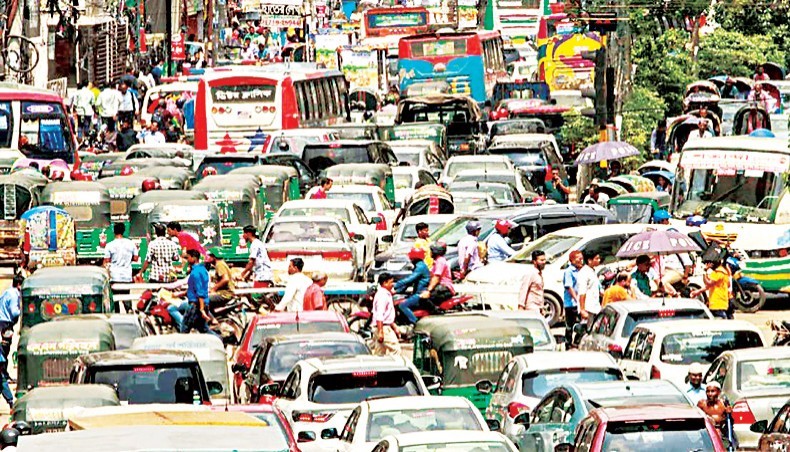
Traffic Congestion In Dhaka
Dhaka, the capital of Bangladesh, is the country’s economic, administrative, and cultural hub. However, it is also one of the most traffic congested cities in the world. Every day, millions of people waste valuable time and resources due to traffic jams. This issue not only affects individuals but also has a negative impact on the country’s overall productivity, the environment, and the quality of life.
Traffic congestion in Dhaka is a multi-dimensional problem that requires well-planned initiatives and effective implementation. This article explores various potential strategies and measures to reduce traffic congestion in Dhaka.
Improving Public Transportation
Introducing Better Bus Services
Dhaka lacks a reliable and adequate public transport system. Reducing private vehicle usage requires an efficient and modern bus service that people can depend on.
-
Bus Rapid Transit (BRT): Establishing dedicated lanes for high-speed buses can encourage people to shift from private vehicles to public transport.
-
Shuttle Bus Services: Introducing shuttle buses on specific routes during peak hours can reduce congestion caused by office-goers.
-
Electric Buses: Deploying electric buses can reduce both traffic congestion and pollution.
Enhancing the Existing Public Transport System
-
Modernizing bus schedules, stops, and ticketing systems.
-
Operating buses under a unified ownership model to ensure disciplined service (like the Dhaka Nagar Paribahan initiative).
-
Reducing unregulated bus routes and developing a well-structured transport network.
Expanding Metro Rail and Train Services
The launch of metro rail in Dhaka has helped alleviate traffic congestion to some extent. However, additional steps can be taken—
-
Developing New Metro Rail Lines: Expanding metro rail routes to the northern, eastern, and western parts of Dhaka will help reduce vehicular pressure on roads.
- Introducing Commuter Trains: High-speed trains on routes like Dhaka-Narayanganj, Dhaka-Gazipur, and Dhaka-Munshiganj can decrease the number of vehicles entering the city.
Controlling Private Vehicle Usage
Discouraging Single-Occupancy Vehicles
-
Promoting Carpooling and Ride-Sharing: Expanding services like Uber, Pathao, and Shohoz can help reduce the number of single-occupancy vehicles.
-
Increasing Vehicle Taxation: Imposing higher taxes on unnecessary personal vehicles can discourage excessive private car ownership.
- Odd-Even Number Plate System: Implementing an odd-even number plate system on specific days of the week can reduce traffic volume.
Improving Parking Management
-
Banning Unauthorized Parking: Strictly enforcing laws to prevent illegal parking on sidewalks and roads.
-
Building Multi-Level Parking Facilities: Constructing multi-story parking structures to eliminate on-street parking congestion.
Optimizing Road Usage
Implementing Smart Traffic Signals
-
Installing modern sensor-based traffic lights that automatically adjust signal timings.
-
Deploying AI-based smart signals at major intersections.
Developing Alternative Roads and Flyovers
-
Constructing bypass roads around Purbachal, Savar, and surrounding areas to divert traffic from the city center.
-
Building small overpasses and underpasses to reduce congestion in high-traffic zones.
Enhancing Sidewalks and Bicycle Lanes
-
Making sidewalks more accessible and pedestrian-friendly to encourage walking instead of using vehicles for short distances.
-
Developing dedicated bicycle lanes to promote cycling and reduce reliance on motorized transport.
Adjusting Office and School Timings
-
Staggering work hours for government and private offices, schools, and colleges to prevent peak-hour congestion.
-
Encouraging remote work and online classes to reduce daily commuting pressure.
Enforcing Traffic Laws Strictly
-
Imposing heavy fines on traffic rule violators to ensure discipline.
-
Increasing the number of traffic police officers and equipping them with modern technology for better traffic management.
Urban Planning and Decentralization
-
Relocating government offices and major institutions outside Dhaka to reduce overpopulation and traffic pressure in the capital.
-
Developing nearby cities like Gazipur, Narayanganj, Cumilla, and Mymensingh to create economic hubs and distribute the population more evenly.
Traffic congestion in Dhaka is a complex problem, but it can be solved with well-integrated planning and strict implementation. Enhancing public transportation, controlling private vehicle usage, optimizing road infrastructure, and enforcing traffic laws can significantly reduce congestion.
Key Strategies to Reduce Traffic Congestion in Dhaka:
-
Improving Public Transport – Modern buses, expanding metro rail, and train services.
-
Reducing Private Vehicle Use – Promoting carpooling, ride-sharing, and implementing odd-even number plates.
-
Optimizing Road Management – Smart traffic signals, alternative roads, and flyovers.
-
Enhancing Sidewalks and Bicycle Lanes – Encouraging walking and cycling.
-
Adjusting Office and School Timings – Reducing peak-hour traffic congestion.
-
Strict Enforcement of Traffic Laws – Imposing fines and ensuring discipline.
-
Decentralization – Developing other cities to reduce Dhaka’s population burden.
With proper planning and execution, Dhaka can be transformed into a traffic-free, livable city. The time for action is now!
